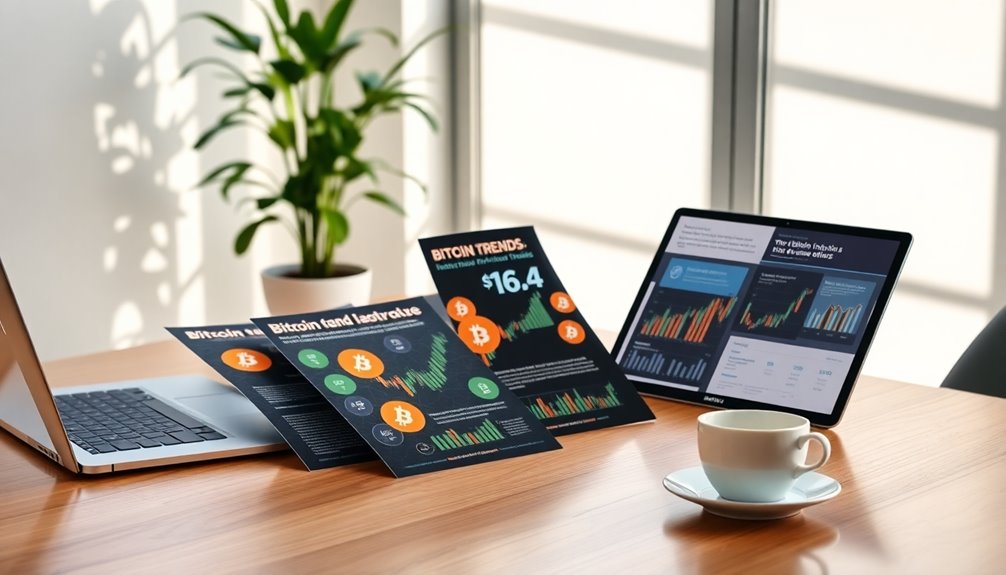As you explore investment options for your retirement portfolio, Bitcoin IRAs are becoming increasingly relevant in 2025. With several leading providers like BitcoinIRA, BitIRA, iTrustCapital, and Alto CryptoIRA in the mix, each offers distinct features tailored to different investor needs. From extensive cryptocurrency selections to enhanced security measures, there's plenty to consider. Curious about which option might fit you best? Let's break down what each provider has to offer.

As you explore retirement investment options, Bitcoin IRAs offer a unique way to diversify your portfolio with cryptocurrencies and alternative assets. Among the top choices are BitcoinIRA, BitIRA, iTrustCapital, and Alto CryptoIRA, each with distinct features and benefits that cater to different investment goals and risk tolerances.
BitcoinIRA stands out with its extensive range of over 75 cryptocurrencies, including popular options like Bitcoin and Ethereum. The minimum investment here is $3,000, and they charge a one-time deposit fee of 5.99%. Their security measures include military-grade protections and cold wallet storage, plus they offer an impressive $250 million in digital asset insurance, providing peace of mind for investors. Additionally, segregated cold storage ensures that your assets are kept safe from potential breaches.
BitIRA, known for its robust security features, offers multi-signature authorization and end-to-end insurance, making it a great choice for those concerned about asset safety. In addition to cryptocurrencies, BitIRA allows investments in precious metals and real estate, catering to those looking to broaden their asset classes. The minimum investment requirement is $5,000, which positions it slightly higher than some competitors but reflects its commitment to security.
If you're looking for lower entry points, iTrustCapital is a solid option. With a minimum investment of just $1,000, it allows access to both cryptocurrencies and precious metals. This flexibility can be appealing for newer investors or those looking to test the waters without a significant upfront commitment.
Alto CryptoIRA offers a diverse selection of cryptocurrencies, making it an attractive option for those who want to explore various digital assets. While it may not provide the same extensive features as BitcoinIRA or BitIRA, it's still a viable choice for investors focused exclusively on crypto.
In terms of account setup, Bitcoin IRA accounts can be established quickly, and they support rollovers from existing retirement plans, making the transition smooth. They also offer educational resources to help investors enhance their market knowledge, ensuring you feel confident in your decisions. Customer support is readily available via phone and email, providing assistance during business hours.
While Bitcoin IRAs present exciting opportunities for diversification and potential high returns, it's essential to approach them with an understanding of the volatility and risks associated with cryptocurrencies. Having a strong risk tolerance is crucial, but the tax-deferred growth they offer can be a compelling reason to consider this innovative investment avenue.









